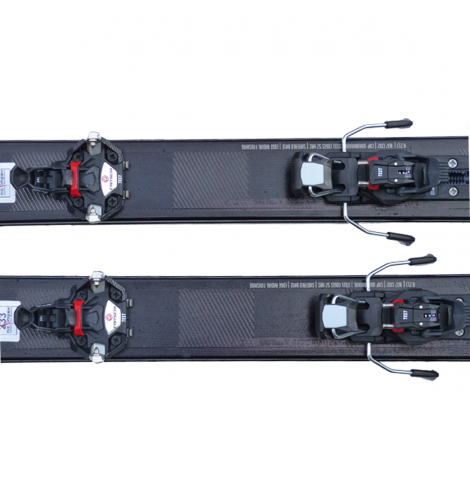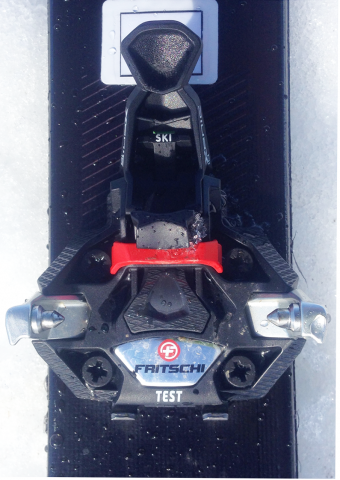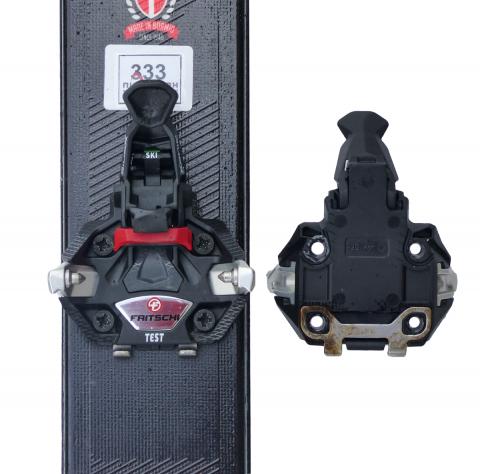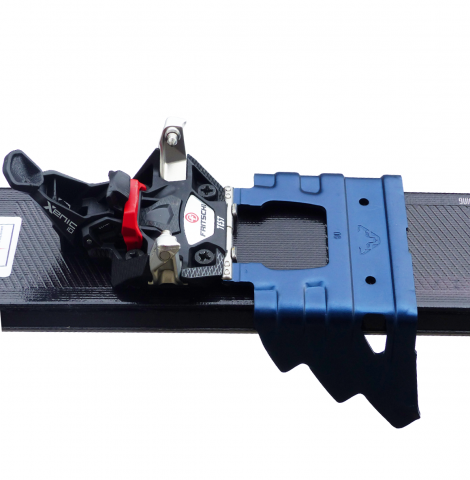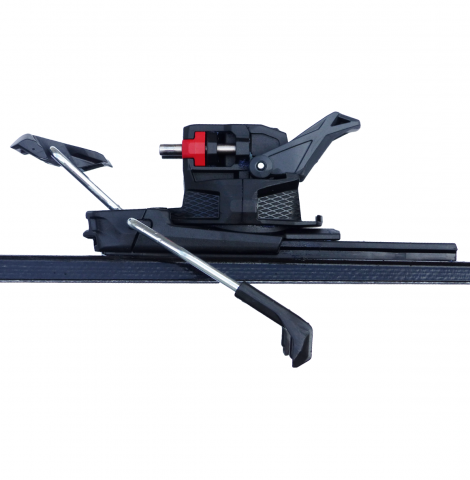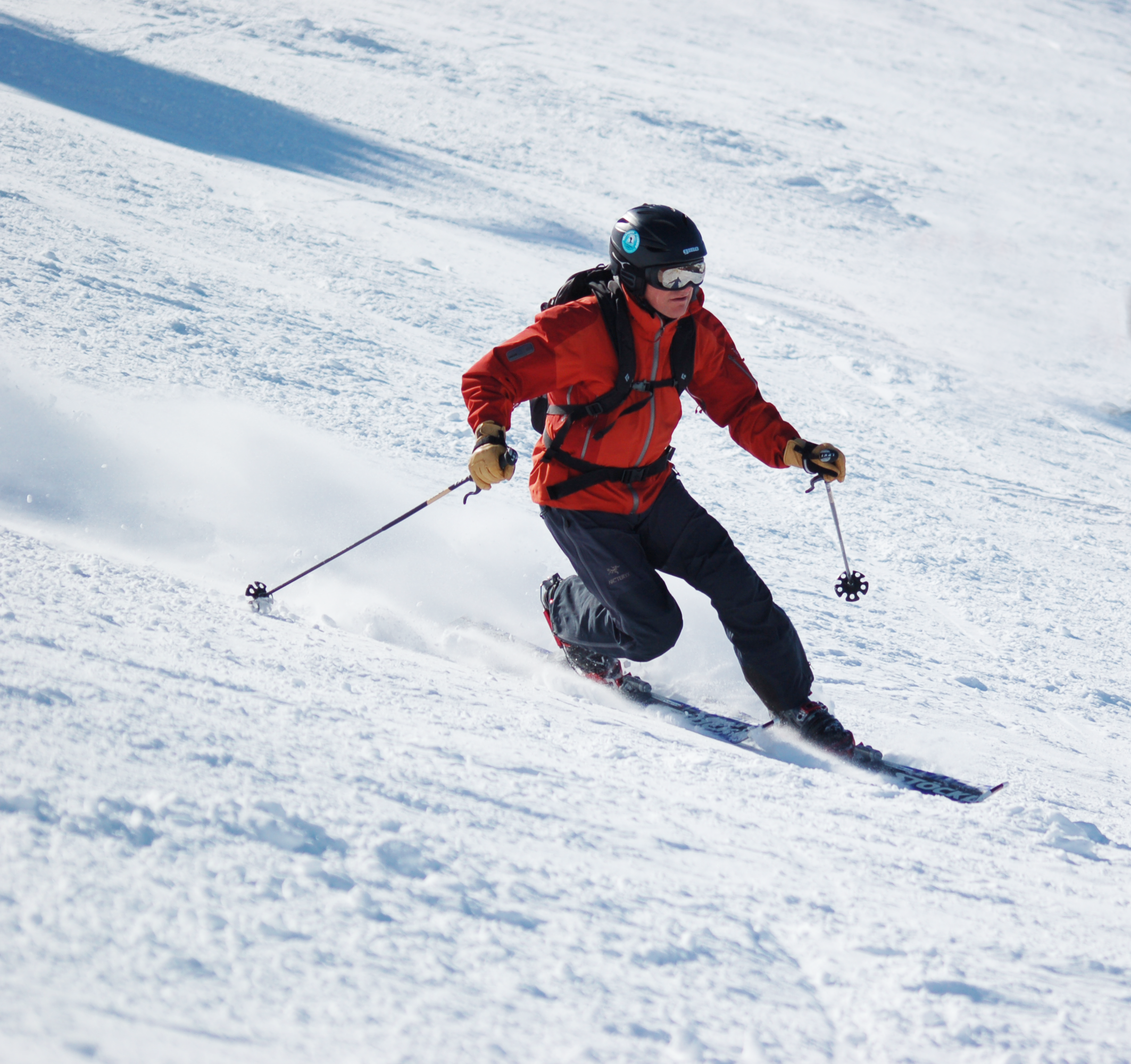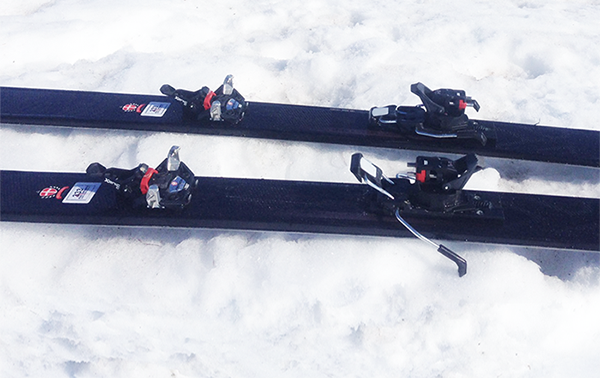
Yes, I know, we are lucky! These bindings have only recently been presented at the ISPO trade show in January, and here they are ready to be tested by the Telemark Pyrenees Team on our Pyrenean snow. We tested the Xenic 10s using a pair of Trab’s new Magico 2 skis, skis and bindings weighing only 1.42 kg per foot, perfect for long tours.
At first glance there is nothing revolutionary and yet...Fritschi have been producing touring bindings for over 30 years, and only launch a new model when they have something innovative to offer.
Even though the toe piece looks like a conventional insert binding, the operation is different from the traditional spring mechanism that closes the jaws. On all other insert bindings the jaws close by rotating around an axis as the boot presses down and overcomes the force of the springs.
FRITSCHI XENIC 10: Unique Toepiece Mechanism
On the Xenic 10 the jaws do not rotate, but slide laterally, snapping shut incredibly quickly without having to overcome the pressure of the springs. Fritschi have designed what must be the easiest step-in mechanism ever. Nothing could be easier than simply aligning the boot toe behind the red wedge. A light pressure on the “trigger” located under the forefoot and the jaws slide inwards and the pins interlock with the boot inserts.
Fritschi’s new system should win over any tourers who’ve not yet moved over to insert bindings. The “trigger” is VERY sensitive and only requires light pressure to activate. This will make step-in much easier in soft snow conditions, when the pressure required to close other bindings causes the skis to sink into the powder.
Once in the bindings treat them like all other insert toe units, pulling up the lever to lock the jaws in walk mode, pushing down to the intermediate position for ski mode.
Being curious folks, we removed the toe piece from the skis to see how it works, but Fritschi have sealed the top and the base so the mechanism is hidden from view, and presumably protected from ice, snow and dirt.
Traditional insert bindings can suffer from unexpected pre-release should the ski suffer shocks from below, for example when taking a heavy landing. Since the jaws of the Xenic only move laterally, the mechanism is more resistant to these impacts and does not pre-release.
The toe units have another important safety feature in ski mode. In the event of a forward fall after the heel unit has released, as the boot rotates forward it causes the toepiece jaws to open so allowing safe release. This happens when the boot is at an angle of 65-75°, depending upon the boot model. This is considerably earlier than most other toepiece designs, resulting in increased safety.
FRITSCHI XENIC 10 : easy to use heel unit.
Changing from climbing to downhill mode is easy: the heel rotates 180°, no need to remove the boots if you’re in a hurry. The rear pins are independent (not a “U” spring) and rotate easily which makes boot entry easier and release more reliable. Lateral and vertical release is 4-10 DIN and easily adjusted using the two flat-head screws that are conveniently positioned at the back of the heel unit. The heel unit looks good, with a stubby lower section housing the lateral release and a narrower upper section where the pins are located. Unusually compared to most other touring bindings, the heel unit of the Xenic 10 splits in half vertically, the front and rear parts being connected by two screws.
The heel unit sits on a rail and can move 10 mm to absorb the flex of the ski, the same amount as the heavier duty free-rando Vipec Evo and Tecton bindings. Many other lightweight pin bindings either do not offer flex compensation, or offer a limited amount that is insufficient. The heel unit has one climbing bar which offers 11° ramp, or 64 mm lift above the top of the ski.
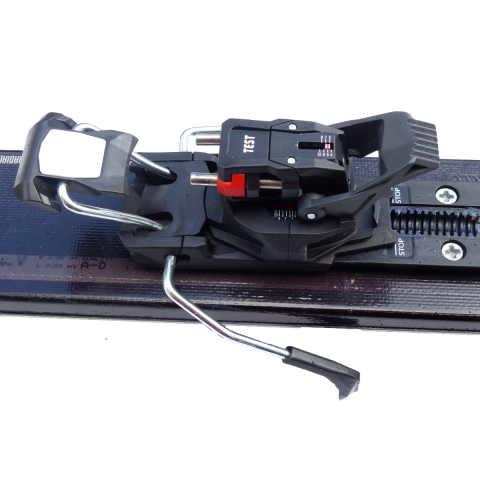
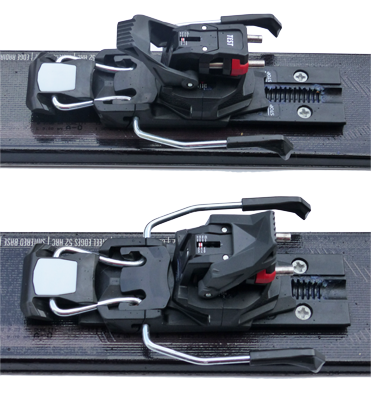
Rotating the heel unit 180° to move from downhill to uphill mode also locks the ski brakes. When we tried the bindings in the shop we had to push the brake backwards to make it lock into walk mode, but when testing on snow we found the simple rotation from the downhill position to the uphill position is enough to lock it.
So what’s it like to use?
Skinning up the Xenic 10 works as well as other lightweight bindings. The heel lift is easy to switch into position with the poles and is wide enough to offer an stable platform for the boots. How and when tourers use heel units varies enormously, with some people rarely or never using them and others flipping them up on the shallowest slopes. Personally I’d have liked a two level system like the Dynafit Radical bindings, which I still find the best and easiest to use, but the climbing heel of the Xenic 10 does the job.
Fritschi will produce ski crampons for the Xenic 10 in three widths, 85, 95 and 105 mm. These are slotted into place in the same way used by Dynafit, whose ski crampons can also be used with these bindings.
How does it ski?
The Xenics were mounted on Trab Maestro 2s, skis that have a much softer flex than we’re used. Since the skis flexed a lot, this tested the flex compensation in the heel piece, which worked very well, the heel unit staying in full contact with the boot heel with no loss of power. In terms of both control and safety this is reassuring, offering the same range of compensation as the Vipec, which is a good reference. Of all the “efficient” or “speed touring” bindings currently available, the Fritschi Xenic 10 has the greatest range of flex compensation, more than that on the Marker Alpinists for example.
Fritschi Xenic 10 (2020) all new lightweight touring binding: Test report.
Weighing in a competitive 280 g per ski without ski brakes (325 g per ski with brakes) the Fritschi Xenic 10 is a well designed binding with an innovative toe unit that really makes step-in easier. Easy to use both when climbing and skiing, the Xenic 10 offers technical advantages over similar bindings in its category. Competing against the Marker Alpinist and Dynafit Speed Turn 2.0 and Speed Radical, Fritschi have announced a price of 330 € for the Xenic 10, which is sure to be a popular binding this winter.



